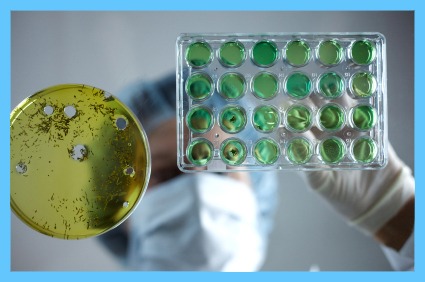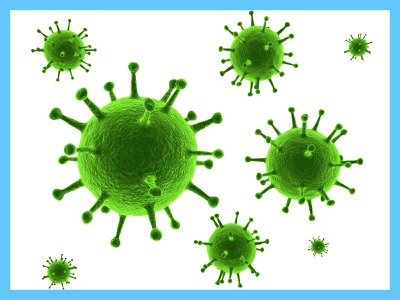What is Chlamydia?
Chlamydia is a common sexually transmitted disease (STD) caused by the bacterium chlamydia trachomatis. Even though symptoms of chlamydia are often mild or nonexistent, serious complications that can cause irreversible damage –– including infertility –– can occur as a result of chlamydia.


Chlamydia is the most frequently reported bacterial STD in the United States. According to the New York Times, the CDC documented more than 1.7 million new cases of chlamydia in 2017 –– up 22 percent from 2013 totals. What’s more, under-reporting is substantial because most people with chlamydia are not aware of their infections and therefore do not seek testing. Also, testing may not occur if patients simply receive treatment for their symptoms. (Treatment without testing is not recommended. Since many STDs can appear similar to each other and other medical conditions, identifying the infection correctly is crucial to treating it properly.)
An estimated 2.2 million non-institutionalized U.S. civilians aged 14-39 are infected with chlamydia based on the U.S. National Health and Nutrition Examination Survey. Women are frequently re-infected if their sex partners are not treated, and women are generally more at risk for the condition than men.
Chlamydia Testing & Treatment
It’s important for all sexually active individuals to get tested for chlamydia on a regular basis. Even if you don’t exhibit any symptoms associated with chlamydia, like painful urination or unusual discharge, you could still have chlamydia in your system. While it’s possible for anyone who’s sexually active to contract chlamydia, having unprotected sex (anal, oral, or vaginal) will increase the risk of transmission. In addition, young women are particularly at risk for contracting this STD, and all pregnant women should be screened for chlamydia. The good news is that testing for chlamydia is both simple and painless.
In general, medical professionals test for chlamydia by using a urine sample. However, for individuals who have developed anal or oral chlamydia, a swab test can also be used. These swab tests are easy to complete, and are just like they sound. The area is swabbed and sent to the lab.
Typically, it takes about 1-3 days to receive the results of a chlamydia test after it is administered.
Contrary to popular belief, chlamydia testing is straightforward and stress-free. Plus, when you visit one of our facilities, you can get tested today. Getting tested is the first step toward getting treated. Because chlamydia is a bacterial infection, doctors can completely cure it by prescribing antibiotics. Note, always take the recommended dosage for as long as your doctor instructs. Just because symptoms of an STD have “gone away” doesn’t mean the infection has been cured.
How Do I Get Chlamydia?
As mentioned above, chlamydia can be transmitted during vaginal, anal, or oral sex. Chlamydia can also be passed from an infected mother to her baby during vaginal childbirth.
Any sexually active person can be infected with chlamydia. The greater the number of sexual partners, the greater the risk of infection. Because the cervix (opening to the uterus) of teenage girls and young women is not fully matured and is more susceptible to infection, they are at particularly high risk for chlamydia if sexually active.
In addition, since chlamydia can be transmitted by oral or anal sex, men who have sex with men are also at risk for chlamydial infection.
It’s also possible to contract chlamydia in the throat, mouth, and/or rectum. This can happen during unprotected oral or anal sex. Ejaculation does not have to occur for chlamydia to be transmitted or contracted. If the infection exists in the throat or rectum, it will not be detected by a urine test. A swab test should be used.
Symptoms of Chlamydia
Chlamydia is known as a “silent” disease because about three quarters of infected women and about half of infected men have no symptoms at all. If symptoms do occur, they usually appear within one-to-three weeks after exposure.
Symptoms of Chlamydia in Women
In women, chlamydia initially infects the cervix and the urethra (urine canal). Women who experience chlamydia symptoms might notice abnormal vaginal discharge or a burning sensation when urinating. When the infection spreads from the cervix to the fallopian tubes (tubes that carry fertilized eggs from the ovaries to the uterus), some women will still have no signs or symptoms; others may feel lower abdominal pain, lower back pain, nausea, fever, pain during intercourse, or bleeding between menstrual periods. Chlamydial infection of the cervix may spread to the rectum in some instances.
Symptoms of Chlamydia in Men
Men with chlamydia may experience several distinct symptoms including discharge from the penis or a burning sensation when urinating. Men may also have burning and itching around the opening of the penis. Pain and swelling in the testicles are uncommon, but not unprecedented.
Men or women who have receptive anal intercourse may contract chlamydia in the rectum, which can cause rectal pain, discharge, or bleeding. Chlamydia can also be found in the throats of women and men who engage in oral sex with an infected partner. The symptoms of oral chlamydia are very similar to those of a common sore throat, which makes it difficult to identify through a physical examination.
Untreated Chlamydia: Risks and Complications
If untreated, chlamydial infections can contribute to serious reproductive and health problems with both short-term and long-term consequences. Like the disease itself, the damage that chlamydia causes may remain asymptomatic for long periods of time.
In women, untreated chlamydia can spread into the uterus or fallopian tubes and cause pelvic inflammatory disease (PID). Up to 40 percent of women with untreated chlamydia will develop PID. PID can lead to permanent damage of the fallopian tubes, uterus, and surrounding tissues. The damage can also cause chronic pelvic pain, infertility, and potentially fatal ectopic pregnancy (pregnancy outside the uterus). Lastly, women infected with chlamydia are up to five times more likely to contract HIV if exposed.
To help prevent the serious consequences of chlamydia, it’s recommended that all sexually active women age 25 years and younger get screened for it at least once a year. An annual screening test also is recommended for older women with risk factors for chlamydia (such as engaging with a new sexual partner or multiple sex partners). All pregnant women should get tested for chlamydia.
Complications among men are rare. Infection sometimes spreads to the epididymis (the tube that carries sperm from the testes), causing pain, fever, and –– rarely –– sterility.
In extreme cases, a genital chlamydial infection can cause arthritis that can be accompanied by skin lesions and inflammation of the eye and urethra (Reiter’s syndrome).
